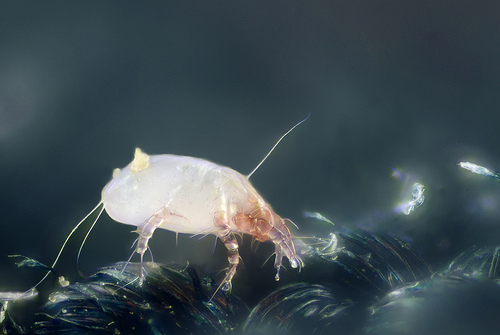Discussion, News
How to tell if a dust mite allergy is causing your eczema
Anybody who has eczema knows that it can be difficult to know what will trigger a flare up. Before I discovered I had a dust mite allergy, I tried the usual remedies; applying moisturiser, avoiding the sun, and using non-fragrant soaps such as Hospigel. But nothing seemed to stop the itch, and it got worse at night. There were times when I got hardly any sleep due to scratching at night, waking up just as tired as the night before. Other than taking oral steroids, nothing seemed to work. But we can’t eat steroids forever (no matter how low the dosage your doctor gives you).
The most important thing to address your eczema is to first identify the root cause. And if you’ve gone through the usual checklist without any obvious reduction in flare ups; avoiding hot sun, rough clothing, chemicals or detergents, you may need to consider whether you’re allergic to dust mites. According to a media article from the National University Hospital (NUH), about 10 per cent of the general population in Singapore have allergic rhinitis, with 90 per cent of these cases caused by dust mites.
To see if you may have a dust mite allergy, ask yourself these questions:
Do you itch more at night? Even after escaping the hot sun, taking a shower, and applying moisturiser?
In my case, I itched ALL the time, but it got especially worse at night. If sweat or heat or dryness had been the cause of my flare up, I would have expected them to subside at night. But for those who have a dust mite allergy, night time is the worst time, since you’re essentially exposing yourself to the biggest trigger of all; your mattress, which probably has the highest concentration of dust mites in your entire home. And I was lying in it.
Do your itchy areas appear evenly spread out instead of concentrating in small patches such as the backs of your knees, neck, wrists and feet?
My eczema seemed quite evenly distributed along my legs, arms and back, rather than concentrating at skin folds or sweaty areas. The rashes also looked different from the images I had seen from medical websites, which usually portrayed eczema as large patches of scaly red dots with oozing. Instead, I had small red dots appearing anywhere. And several GPs even thought they were insect bites.
Are your flare ups accompanied by runny nose, itchy eyes and sneezing?
This was not the case for me (my nose was fine throughout), but dust mite allergy sufferers may experience inflammation of the nasal passages, making them feel as if they have a cold that won’t go away, or even experiencing facial pressure and pain.
Does your eczema appear along the areas that are typically more exposed?
Every time I did housework, my fingers would itch the next day. My hands, wrists and arms, as well as my waist, ankles and lower legs were the main areas. It seems obvious now, since these are the areas not usually covered by home or work clothes. Even opening and closing the curtains (which have high concentrations of dust mites) set me off.
Ok I think I have a dust mite allergy. Now what?
Now comes the hard part. Dust and dust mites are everywhere, so here are a few things to help you get started in avoiding them:
1) Be aware of the areas that give you the most exposure to dust mites. Bedding, mattresses, couches, and plush toys are the common areas
2) Wash these items in hot water (60 degrees) regularly, or put them out in the sun, or vacuum them regularly.
3) Encase your mattress with the correct dust mites encasement. Here are guides on how to choose the correct dust mites protector (Note : Don’t get the commercialize padding top from the departmental store)
4) Apply a shielding lotion that blocks your skin from dust mite exposure.
It seems pretty obvious now that dust was my main trigger, but before a blood test confirmed it, it was very difficult for me to really pinpoint the cause. Lack of sleep, constant itching, and the helplessness you feel thinking you can’t seem to make it go away made it very hard to notice any patterns. I hope the list above helps you. If you answered ‘yes’ to any of the above, keep your eyes open for dust allergies. It may help you connect to dots, and finally get the relief you’ve been looking for!
(image by Gilles San Martin)
